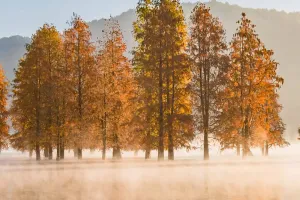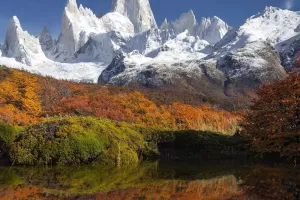Country Of Fjords
It is not difficult to find Norway on a world map; just look for the fjords! Open a world map, as long as it is not the smallest, and observe the coastlines of each continent. You will find that, apart from Norway, there is no other place in the world where the coastlines are so fragmented.
When it comes to Norway, many people immediately think of fjords. Because fjords are the most representative landscape in Norway, even geological experts call Norway the "country of fjords".
Only after enjoying the scenery of the fjords in Norway can you feel the most breathtaking charm of this magical country.
For a long time, the "sea deep into the interior" that the public has been talking about is here--Norway. This wonderful and lively land is also the darling of major travel magazines, so why is it so famous here? Let's take a look together.
The fjords were formed by massive glacial erosion below sea level. Over 2.5 million years, a series of glacial cycles etched the ground into U-shaped canyons. There are more than 1,000 fjords in Norway, the most spectacular of which are concentrated in the south.
Norway's long coastline boasts many fjords, but there are four most famous fjords, known as "Norway's four fjords". The four fjords are from north to south: Geirangerfjord, Sognefjord, Hardangerfjord, and Lysefjord. Among them, the Geiranger Fjord was listed by UNESCO in the "World Natural Heritage List" in 2005 with its magnificent natural scenery.
1. Geirangerfjord
The Geirangerfjord is located in the north of Bergen on the southwestern coast of Norway. It is the most beautiful and mysterious place in the Norwegian fjords. The total length of the fjord is 16 kilometers, and there are mountains with an altitude of more than 1,500 meters on both sides of the fjord. The Geirangerfjord is famous for its waterfalls, many of which cascade down the steep rock walls into the fjord. The surrounding attractions are also the Briksdal Glacier.
2. Sognefjord
Sognefjord is the largest fjord in Norway and the longest and deepest fjord in the world, with a total length of 204 kilometers and a deepest point of 1308 meters. The mountains on both sides of the bank are high and the valleys are deep. The slopes at the bottom of the valley are steep and grow vertically until they peak at an altitude of 1,500 meters. The rock formations on both sides of the fjord are very hard, mainly composed of granite and gneiss, mixed with a few limestone, dolomite, and marble.
3. Hardangerfjord
The Hardangerfjord is located in Hordaland County in the central region of western Norway. With a total length of 179 kilometers, the Hardangerfjord is the second-longest fjord in Norway and the third-longest in the world, with a depth of 800 meters.
4. Lysefjord
Lysefjord is located in southern Norway and is 42 kilometers long. The entrance to the Lysefjord is Stavanger on the west coast of Norway. The river winds its way among dramatic cliffs and majestic mountains. Huge rocks are standing on both sides of the bank, among which the 600-meter-high cliff of Brekestron is the most worth seeing. Standing on the giant rock, you will feel as if you are floating in the air, and you can strongly feel the vitality of nature.


